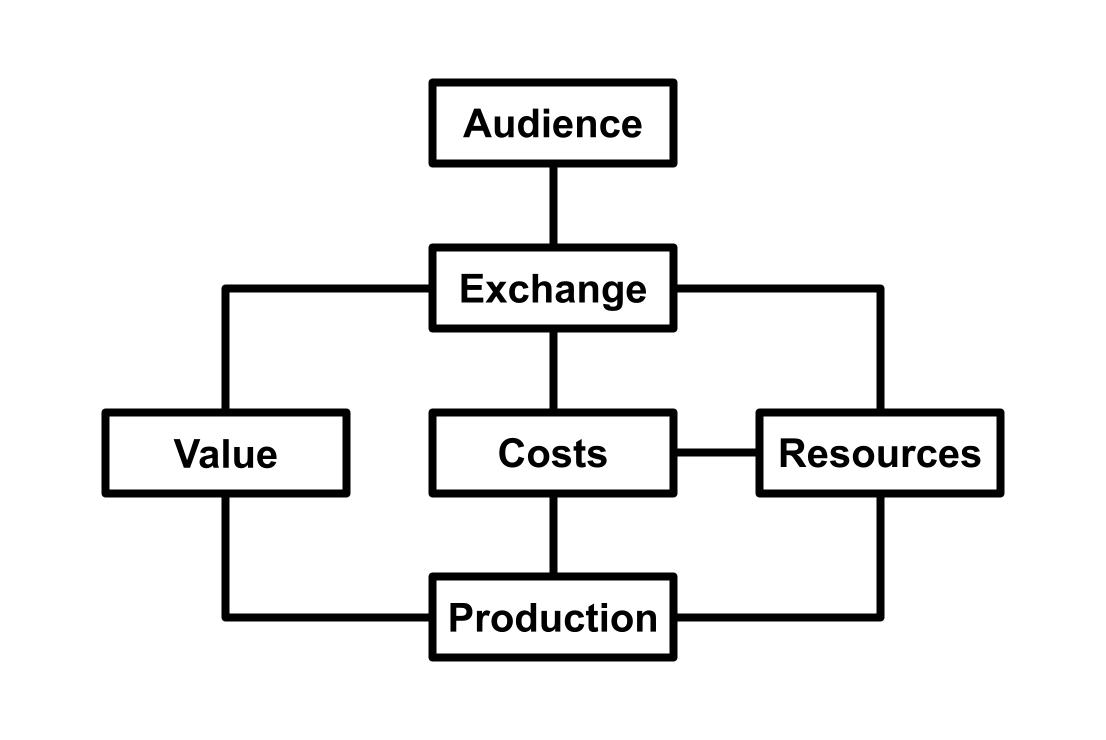Modeling a Group's Value

Every group has a value to offer to an audience, otherwise there is no reason to be a group. Audiences include both external and internal stakeholders.
We use a Value Model as a conceptual framework to articulate the COSTS and RESOURCES required for the PRODUCTION and EXCHANGE of VALUE between a group and its AUDIENCE(s).
The Value Model is an analytic structure we use to collect and process data into ideas. We also use the Value model as an effective way to compare a group's current conditions with those its stakeholders desire. It's a great way to identify, design, and monitor change. The Value Model has six components, each loaded with a multitude of interconnected facets and nuance relevant to the group. The components include:
- Value – The product, service, or function a group provides for which an audience demonstrates value. This is the benefit a group offers that is valued by people. This is what a group delivers that keeps it going. This is the problem a group solves, the niche a group fills, the advantage a group provides.
- Audience – The people who support what a group does by exchanging resources for a group’s value. Sometimes the audience (i.e., those who value what you do) is different from the recipient of your group’s product, service or function. A group’s audience includes the people who want what a group provides. They are a source of resources a group relies on to produce and exchange its value.
- Exchange – The process of delivering a group’s value to an audience in exchange for resources. This process includes the outreach and engagement of an audience and the fulfillment of a product, service, or function to recipients. In some cases the recipient of a group’s value is different from the audience that provides resources.
- Production – The key steps taken to develop, create, manufacture and/or produce the value a group provides. This includes the skills, materials, conditions and information required to produce the product, service, or function a group offers.
- Costs – The consumption of time, money and material involved in producing and exchanging a group’s value. This is the amount of resources a group requires to develop, create, manufacture, produce, deliver, and retrieve resources for a group’s product, service, or function.
- Resources – The people, money, environment, infrastructure, and things required to build and deliver a group’s value. These are the key inputs required to keep a group going.
Basically, the Value Model is an explanation of how a group persists. The failure of any Value Model component threatens a group's viability.